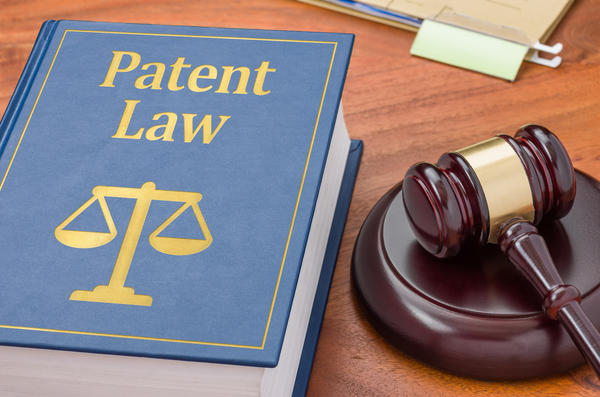Drew Clark: Why a Well-Functioning Intellectual Property System Needs to Strike Down Bad Patents
Editor’s Note: This past week, Drew Clark’s colum [http://www.deseretnews.com/article/865635169/Feeling-the-refreshing-breeze-of-Washington-politics-in-Aspen.html?pg=all]n in the Deseret News of Salt Lake City, Utah, was on the importance of balance in our patent system. Click here [http://www.deser
Editor’s Note: This past week, Drew Clark’s column in the Deseret News of Salt Lake City, Utah, was on the importance of balance in our patent system. Click here for links to all of his Deseret News columns.
ASPEN, Colo. — As with many former mining camps in the Rocky Mountains, this one is best known for winter sports like skiing. But this mountain town has also developed a summertime niche: Hosting policy-makers seeking the cool air refuge from humid Washington summers.
This year, the refreshing breeze came in from the new head of the United States Patent and Trademark Office.
For nearly 20 years, Aspen in late August has been home to a small but influential gathering of the Technology Policy Institute. It gathers legislators, regulators, lobbyists and academics who seek to shape the course of policy surrounding information and communications technology.

Distressingly enough, this year’s theme was “The Government Back in Business: Revenge of the Regulators.” Whether the topic was network neutrality, securing cyber-defense, monitoring online privacy or dealing with dated topics like subsidizing telephone service, the record of the Obama administration does suggest that regulation is back in vogue.
Which is why it was so refreshing to hear luncheon remarks from Michelle K. Lee, the undersecretary of commerce for intellectual property and the director of the USPTO.
Lee, an electrical engineer, a business executive and a lawyer, has headed the USPTO since January. Unlike other agencies that seek to control cyberspace (think of the Federal Communications Commission, the Federal Trade Commission, or the U.S. Department of Justice’s antitrust division), the patent office is less of a regulator and more of a bureau of land records.
It dutifully records, examines and certifies the “claims” that are so important to the innovation economy.
As Lee recounted, only a few decades ago, intellectual property — patents, copyrights, trademarks and trade secrets — was tangential to core business assets like factories, plants, warehouses and inventory.
By contrast, today’s inventions, designs, algorithms and brands are closer to the center of economic value. Lee cited a government report showing that one-quarter of all jobs, and one-third of our country’s Gross Domestic Product, relies upon intellectual property.
All of this talk about the value of these intangible assets is to be expected from the nation’s chief cheerleader for intellectual property. Previous heads of the patent office or the copyright office have sung similar tunes.
What Lee did that was different was emphasizing the second point: “The importance of a balanced intellectual property initiative.”
What does it mean to have balanced patent laws?
It means that the inventor of a novel creation that is useful and not obvious can obtain a 20-year grant — a patent — for the right to exclude others from making use of that particular invention.
Hence the most critical role of the patent office is its ability to assess the individual claims that inventors make when they line up at the doors of the USPTO.
In the same way that a county land records office puts the public on notice of real estate claims of other landowners, patent office decisions publicly mark the terrain of innovation that has already been trod. This helps subsequent inventors know what has already been claimed. They can instead focus on something new.
Seen from this light, it’s clear that a bad patent — a decision that grants expansive patent claims to a purported invention — is as damaging as a bad real-estate title.
Lee highlighted the patent office’s dogged determination to weed out those bad patents that might have slipped through more careful examination through its “enhanced patent quality initiative.”
“There is a cost to society if we issue a patent that should not have been issued, just as there is a cost to society for not issuing a patent that should have,” she said.
At root, issues of patent quality are lurking behind the current congressional debate over so-called “patent trolls.” That term refers to those using a bogus claim and imposing the toll of litigation on innocent entrepreneurs creating jobs and economic growth. Lee said the Obama administration supported legislation to combat abusive patent litigation.
In this fight against “trolls,” USPTO was granted a new weapon with the creation of the Patent Trial and Appeal Board in the America Invents Act of 2012.
That law allowed the patent office to beef up the number of adjudicators capable of reviewing patent challenges through an expedited procedure that must be conducted within one year, significantly shorter than the timetable for litigating patent claims in federal court.
And in the three years since the board has been in existence, it’s received 3,655 petitions challenging patent claims. That’s three times the amount that the prior director expected under the law. Of those petitions, the board has struck down 25 percent of claims challenged as unpatentable innovations.
Striking down bad claims is good. And when that kind of balance is actively advocated by the USPTO, it’s a positive sign for the future of innovation.











Member discussion